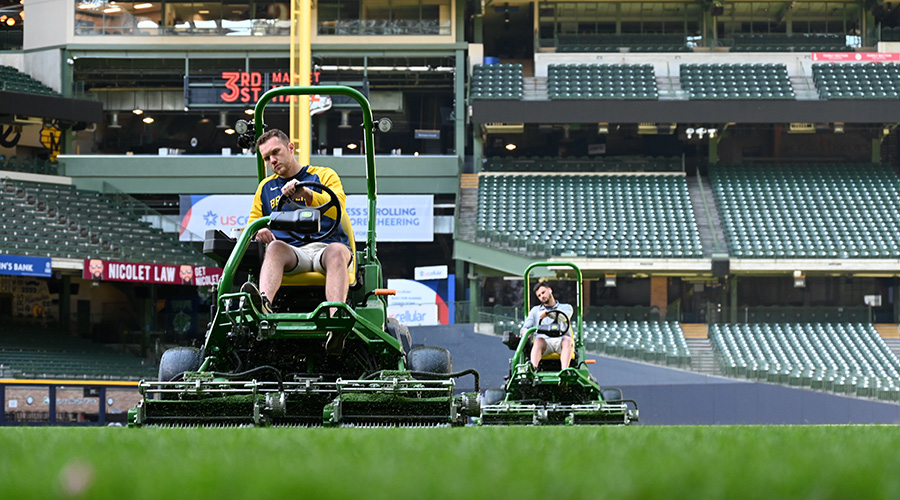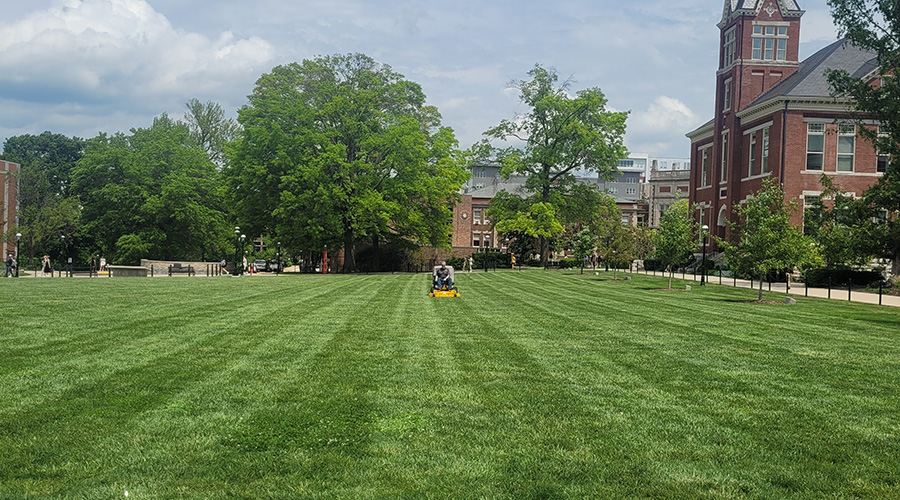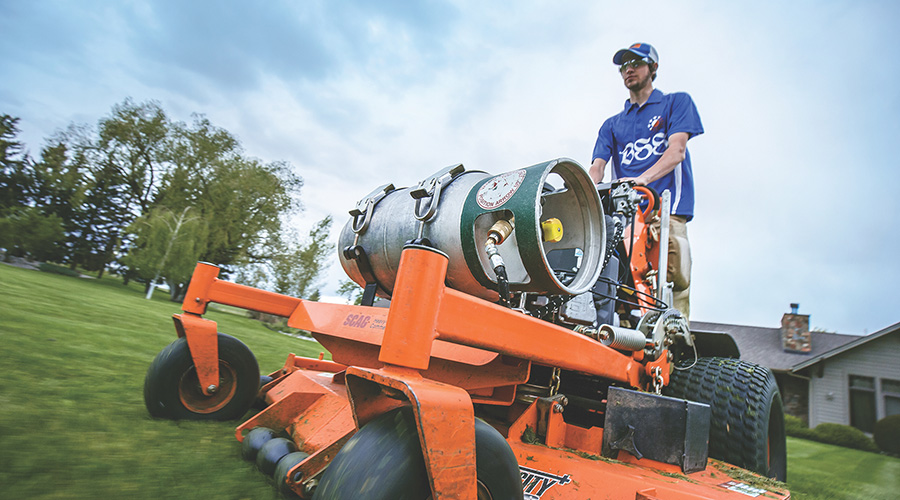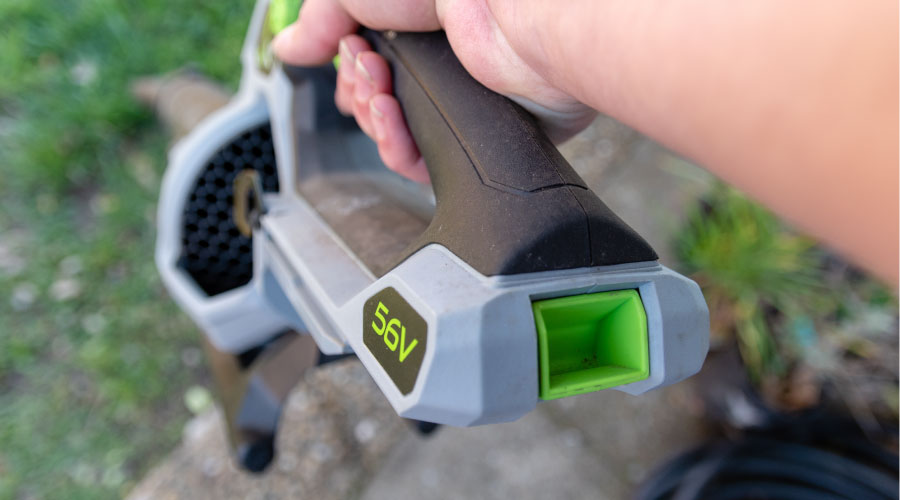Grass-Roots Turf Management
Chemical considerations are one of many essential issues managers must weigh in ensuring healthy turf
Grounds managers face an ever-evolving set of challenges in managing turf. On one hand is the organization’s desire to keep these areas looking their best. On the other are a host of management, budget and regulatory issues. Striking the right balance is an ongoing time-consuming task.
Pesticide use can have a big impact on a site’s health and appearance, as well neighboring properties, people and animals. The misuse of pesticides can be as detrimental as the proper use is beneficial. A well-planned turf-chemical strategy that combines effectiveness, safety and equipment issues is critical for success.
Improving Effectiveness
The first step in choosing turf chemicals is to determine the problem. Positively identifying the insect, disease or weed is critical in finding effective control. It is also important to understand the host plant because some pesticides can damage select plants. Managers can choose from among dozens of insecticides, fungicides and herbicides, so finding a reputable dealer is essential in sorting through all of the products.
The best chemicals are the least toxic and most effective, and managers have a number of new chemicals from which to choose. Clothianidin is a new insecticide that controls white grubs, sod webworms, chinch bugs, and other damaging insect pests in turf. This chemical also is registered for use on ornamentals to control mealy bugs, aphids and whiteflies.
In December 2005, the U.S. Environmental Protection Agency (EPA) ruled that formulators can sell blended products containing fertilizer impregnated with the combination of the insecticides imidacloprid and bifenthrin. The two products together control turf pests both above and below the surface.
These pests include all major white grub species, as well as billbug larvae, annual bluegrass weevil larvae, mole crickets, chinch bugs, cutworms, sod webworms, and fire ants.
Many new products on the market are not new chemistry. Instead, they are existing chemicals combined to produce a more versatile and effective product. For example, imidacloprid and bifenthrin are not new chemicals; they have simply been combined to form a product with broad-spectrum control. When a product provides greater versatility and improved efficacy, it reduces the number of applications that must be made. For grounds managers, that translates into less labor and reduced costs.
Adjuvants are often used to improve effectiveness of chemicals. Typically, an adjuvant is a non-toxic agent used to control drift and to make the chemical stick to, spread out on, or penetrate into to the leaf surface. They also can increase the compatibility of chemicals that are mixed together.
Also, more organic, biological-based and environmentally friendly products are entering the market. For example, corn gluten meal is a fertilizer and pre-emergent herbicide. Neem, cedar and garlic oils are available to control insect pests, and many newer fungicides are actually made of beneficial fungi and bacteria.
Application Issues
Along with choosing the proper chemical, application timing is a critical consideration.
If a pest is not in a susceptible stage of its growth when applications are made, the product, time, and money are wasted. Also, the environment and applicator are exposed to potentially harmful chemicals for no reason.
Understanding a product’s formulation can help managers prevent such occurrences. Chemicals with longer residuals or time-released formulas can broaden the windows of application, making exact timing less critical.
Managers also should closely monitor the weather before application. Chemical applications of some products in inappropriate weather conditions can cause severe and unnecessary damage. This practice can lead to a result more costly than lost time or product — litigation.
Safety
The keys to turf-chemical safety are education and training. Employees applying pesticides need to know the plants, pests, products and equipment they are dealing with. Most states require testing and licensing for all personnel making pesticide applications. For safety in the workplace, managers should always refer to the guidelines set by the EPA, the Occupational Safety and Health Administration (OSHA), and the state’s department of agriculture.
Providing proper protective clothing and equipment for applicators is essential and should conform to guidelines set by the federal government. The EPA’s worker protection standard (WPS) is available from the regional office.
Workers must wear protective clothing when handling, mixing and applying chemicals. The attire for a well-dressed pesticide applicator includes: rubber boots; eye protection; a long-sleeved shirt; long pants; chemical resistant, waterproof gloves; and a pesticide respirator.
Applicators also should wear a chemical-resistant coverall, including head covering, if doing overhead spraying. Managers can refer to the WPS for specific details, which also is printed on every pesticide container’s label.
Applicators will be subject to less chemical exposure if they conduct spraying from a spray unit or tractor equipped with a cab. Some cabs provide enough protection to be equivalent to specific types of personal protective equipment (PPE). The WPS requires that cabs be certified in writing, from either the manufacturer or the government. Certification assures that the cab will provide a certain level of protection, either by filtering pesticides from the air or by providing clean air. If the cab is not certified, the applicator should wear required PPE.
Equipment
Workers apply pesticides using two types of equipment: spreaders for dry, granular products; and sprayers for liquids, emulsions, and soluble and wettable powders.
Drop spreaders provides even distribution of chemicals directly below the unit. It is easier to put the product exactly where intended, which is especially beneficial when applying herbicides near ornamental beds. But applicators using drop spreaders will need to make more passes to cover an area, so application times are longer.
A broadcast spreader throws the chemical over a wider area, allowing an applicator to make fewer passes per application, depending on the product and the desired coverage. This benefit makes application speed much quicker. Due to the more random distribution of product, it is easier to get full coverage with less streaking and fewer missed areas. Deflectors are available on some models that increase control of product distribution.
Sprayers
Managers have a vast array of sprayers from which to choose. Those offering capacities of 1-300 gallons are commonly used in grounds care operations. Units with manual, electric, and gas-powered pumps are available.
When spraying sizable areas, large-capacity tanks are the most efficient. Large-capacity tanks can be mounted directly onto a vehicle — a mower or utility vehicle, for example — or they can be mounted onto carts and pulled behind the vehicle. Depending how the sprayer will be used, managers can purchase a boom attachment for lawn applications, or a hose and spray gun for applications on lawn, trees and shrubs.
Backpack sprayers are a staple in any grounds care department. At this time, an international task force of manufacturers and regulatory agencies is working to develop a minimum standard that would make the backpack sprayer more durable, safer and more accurate.
Managers should make sure to give applicators separate backpack sprayers for different types of products, making sure to clearly label each according to its use. Using the same sprayer to apply herbicides and insecticides is asking for trouble, so specify one sprayer for insecticides, one for fungicides, one for non-selective herbicides, one for broadleaf herbicides and one for grassy weed control.
Managers also might want to buy separate sprayers and spreaders for each applicator. This approach allows each applicator to calibrate equipment to his or her walking speed and spray technique. Calibration also is important to make sure the proper amount of product is being applied. It both minimizes product use and maximizes effectiveness.
Managers purchasing any pesticide application equipment should consider staying with a well-established manufacturer because a lack of good design and proper engineering is all too common. Dependability and safety are essential in all pesticide application decisions.
The Equipment Equation
Among the questions managers can ask staff in choosing equipment for applying turf chemicals are these:
-
What types of trees, shrubs, and turf will be affected?
-
How many different chemicals and formulations will be used?
-
Where will the products be applied? How large are the areas to be treated? Are there obstacles that would limit equipment type or size?
-
Who will use the equipment? Will the designated person or persons be able to physically handle the equipment? Will there be more than one piece of each type of equipment needed?
-
How easy is the equipment to set up and operate?
-
What is necessary for proper equipment maintenance?
-
Are replacement parts readily available and easy to install?
-
How much does the equipment cost?
-
How durable is the equipment? Will it get considerable use and abuse, or will it only be used occasionally?
— Cathy Walker
|
Related Topics:











